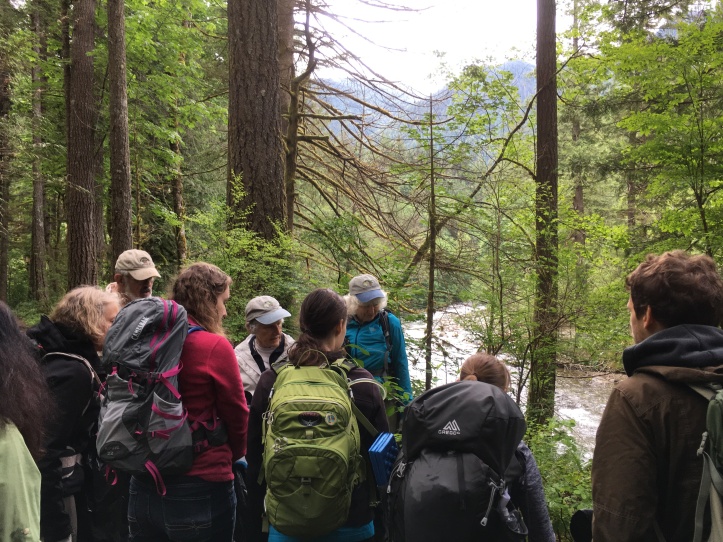As spring approaches, it’s a good time to reflect on what we can do this year to help the natural world here at home. Learning about and taking action to help stop the spread of invasive species is one great way to give Washington’s natural world a hand.

- Awareness followed by action is the best approach to stopping invasive species!
In honor of Washington Invasive Species Awareness Week (Feb 25-Mar 3), the Washington Invasive Species Council has given us an excellent list of ways we can help fight invasive species. Below is a short excerpt of their ideas (with some King County links added by me).
(Read the whole list at https://invasivespecies.wa.gov/wisaw.shtml)
Clean your hiking boots, bikes, waders, boats and trailers, off-road vehicles, and other gear before you venture outdoors to stop invasive species from hitching a ride to a new location. Visit the council’s Washington Invasive Species Education (WISE) Web site to learn more about preventing spread.

- Don’t take it with you! Clean your boots before leaving weedy areas.
On your next walk, watch for noxious weeds. Visit the Washington State Noxious Weed Control Board’s Web site to learn about noxious weeds and if you spot some in your yard or while walking in your neighborhood, notify your county noxious weed control board.
Download the WA Invasives mobile app so you are ready to report sightings of invasive species. Check out the Top 50 worst invaders.
Plant only non-invasive plants in your garden, and remove any known invasive plants. (See GardenWise Online for non-invasive alternatives or visit King County’s Native Plant Guide to plan your native plant garden).

- Native spiraea is a great addition to a native plant landscape that will attract native pollinators. Photo by Katie Messick.
Volunteer to survey public lands and trails as a Citizen Science Invasive Plant Monitor with the Pacific Northwest Invasive Plant Council (sign up to attend a trail weed watcher training class in King County).

- Learning to identify invasive plants while hiking is a great way to combine having fun with doing good!
Volunteer to help remove invasive species from public lands and natural areas. Contact your local state, county, or city parks and recreation department, or county WSU Extension office to learn more. (In King County, check out volunteer ideas with King County Parks or visit our Volunteer Info Page for more ideas.)

Don’t pack a pest. Certain items obtained abroad may contain invasive insects, pathogens, or weed seeds. When traveling abroad, review travel guidelines on items that should not be brought back to the United States. Learn more about what you can bring home by visiting dontpackapest.com.
See more solutions for preventing the spread of invasive species at Washington Invasive Species Education.

Someone else just wrote about English ivy, like in the picture above. Is montbretia or crocosmia invasive there too?
https://wordpress.com/read/feeds/956528/posts/1779074446